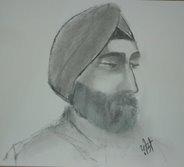Paul Otellini, CEO Intel @ CES
I was not planning to go for this keynote as I wanted to spend more time on the show floor. However, I just wanted to sit down as my feet were killing me after having walked for 6 hours. I was pleased that I did go for the keynote. Bill Gates looked tired and
Paul started with a video with new words and images for the 80s song: "Video killed the radio star" ... that went "Internet killed ... CDs, Video, etc, etc".
The key messages from his speech was that the "Go to" internet will become an "internet comes to us" and far beyond push media, rss, etc to an environment that really understands context, needs and preferences. Everyone agrees on this (Bill did too!) and there is a lot of innovation in that direction.
He went on to demo a Mobile device that translates road signs from Chinese to English and even acts as an interpreter, reads restaurant signs and streams restaurant ads. Very cool! Paul described it as a Total Immersion Technology that understands our needs based on context. We get what we need when we need it and how best we can consume it.
He then demoed Everyscape, real views of a location. I think there are several projects underway in this space to take maps to the next level with real images for a true experience of a location before we get there.
Key Obstacles
- processing power (after all, it was an Intel presentation)
- pervasive access to broadband
- natural User Interfaces
- security and privacy
1. Processing Power
Intel (and others) have continued to make chips smaller and more efficient ... Moore's law lives on (twice the transistors on a chip in 2 years). More and more functionality (audio, video, wireless internet) is being delivered in SOC (System On Chip) packaging. Smaller and smaller chips put more and more functionality in mobile devices.
2. Wireless broadband everywhere
Wimax, 3g, 4g, etc. promise to deliver higher and higher bandwidth to mobile devices.
3. User Interface
Bill also pointed out that we are now moving beyond keyboard, muse and joysticks to wands, gestures, etc.
Paul and others then brought on the coolest demo of the presentation. It described in detail in this Wired article and in this AllthingsD blog post. The companies that participated:
- eJamming: Paul thinks that social networking does not offer social interaction. This will change in the next few years.
E-jamming: Allows band members at remote locations to play together. WOW! Very Impressive! They plan to launch technology to "Jamcast" live performances by bands at dispersed locations on the internet.
Big stage: Allows you to easily create a life-like avatar from 3 photos and instantly integrate it (yourself) into movie / TV scenes, music videos, virtual worlds, still images, emails, social networks, etc.
Organic motion: motion-capture system that requires no specialized suits, just an array of cameras.
Smash Mouth then performed the first-ever virtual song: Steve Harwell (lead singer) performed in the Organic Motion booth and the band live over the Internet. Everyone was on the screen as avatars. Very cool. Intel surpassed Microsoft in a software demo!


No comments:
Post a Comment